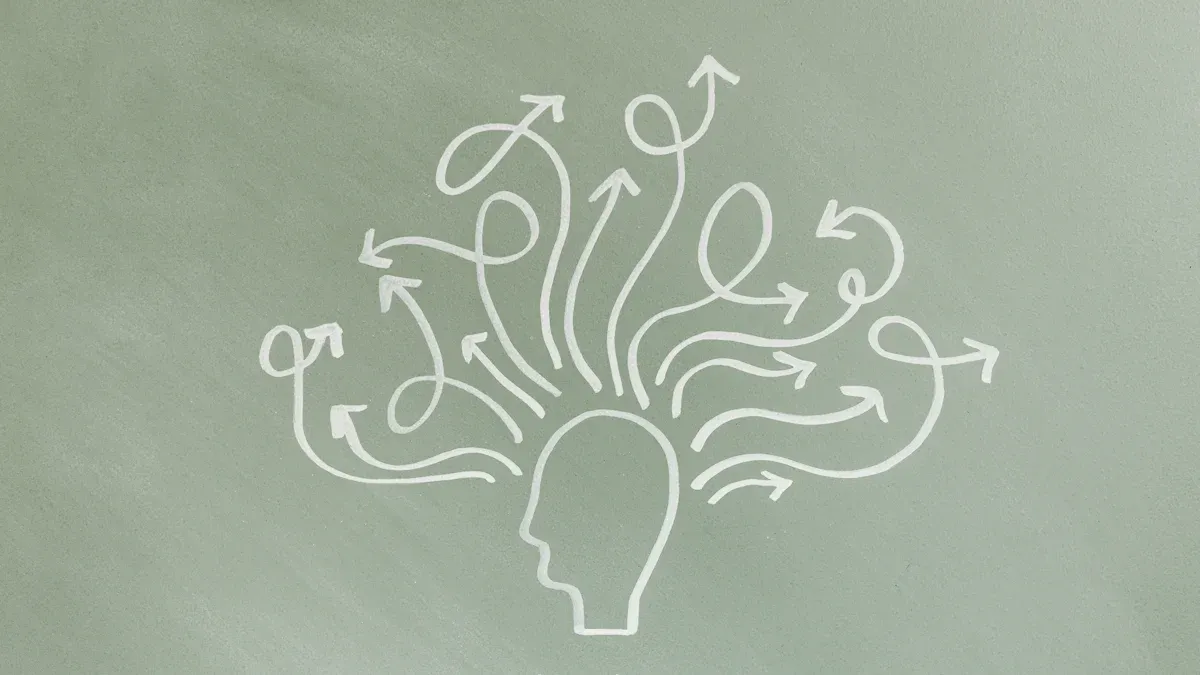Early Signs of Neurodevelopmental Disorders in children
Dr. Kathryn Baltazar-Branganza is a board-certified neurodevelopmental pediatrician based in Metro Manila.

Early signs of neurodevelopmental disorders in children can appear in various ways. You might notice delays in speech, difficulty with social interactions, or challenges in motor skills. Autism spectrum disorder, for example, affects 1 in 166 children, and experts suggest that diagnoses can occur as early as 12 to 18 months. Early identification is crucial because it allows for timely intervention, which can significantly improve outcomes. If you observe unusual behaviors or developmental delays in your child, paying attention to these signs could make a meaningful difference in their growth and well-being.
Key Takeaways
Notice early signs like trouble talking or making friends. Get help early.
Watch your child's growth steps carefully. Missing steps might mean they need expert help.
Helping early can make a big difference. It can improve talking and social skills.
Connect with experts and other parents. Share tips and learn from each other.
Make a daily plan and a calm space at home. This helps your child feel safe and grow.
What Are Neurodevelopmental Disorders in Children?
Neurodevelopmental disorders in children refer to conditions that affect the growth and development of the brain and nervous system. These disorders can impact how a child learns, communicates, interacts socially, and performs daily tasks. Current estimates suggest that approximately 15–20% of children experience some form of neurodevelopmental disorder, making early recognition essential for effective intervention.
Common Types of Neurodevelopmental Disorders
Several types of neurodevelopmental disorders are commonly diagnosed in children. These include:
Intellectual Disability (ID): A condition characterized by limitations in intellectual functioning and adaptive behavior.
Attention-Deficit/Hyperactivity Disorder (ADHD): A disorder involving persistent patterns of inattention, hyperactivity, or impulsivity.
Autism Spectrum Disorder (ASD): A condition that affects communication, social interaction, and behavior.
Communication Disorders (CD): Disorders that impair a child’s ability to understand or express language.
Specific Learning Disorder (SLD): Challenges in reading, writing, or math skills.
Motor Disorders (MDs): Conditions that affect coordination and movement.
Disorder Type | Prevalence Rate |
|---|---|
Intellectual Disability (ID) | 0.63% |
Attention-Deficit/Hyperactivity Disorder (ADHD) | 5–11% |
Autism Spectrum Disorder (ASD) | 0.70–3% |
Specific Learning Disorder (SLD) | 3–10% |
Communication Disorders (CDs) | 1–3.42% |
Motor Disorders (MDs) | 0.76–17% |
Understanding these types can help you identify potential concerns in your child’s development.
How These Disorders Affect Development
Neurodevelopmental disorders can influence various aspects of a child’s growth. For example, ADHD may lead to difficulties in focusing or controlling impulses, while ASD often affects social and communication skills. Research highlights that these disorders can cause delays in functional, structural, and cognitive maturation. A study by Thapar et al. (2017) found that children with neurodevelopmental disorders often face challenges in achieving developmental milestones. Delayed diagnosis can also result in life-long disabilities, as noted by Nickel et al. (2019).
Early intervention plays a critical role in minimizing these impacts. Addressing concerns promptly can improve outcomes and reduce the burden on families and society. By staying informed, you can better support your child’s development and well-being.
Early Signs of Neurodevelopmental Disorders

Communication and Language
Delays in communication often serve as one of the earliest indicators of neurodevelopmental disorders in children. You might notice that your child struggles with speech development, such as delayed speech or a lack of babbling during infancy. Research highlights that children with significant language delays are often diagnosed with autism earlier, around 56 months, compared to those with milder delays, who are diagnosed closer to 91 months.
Another common sign is difficulty understanding or following instructions. For example, your child may not respond appropriately when asked to perform simple tasks, like picking up a toy. Limited use of gestures, such as pointing or waving, can also signal developmental delays. These early signs of communication challenges should prompt you to monitor your child’s progress closely and consult a specialist if needed.
Social Interaction
Social interaction challenges are another hallmark of neurodevelopmental disorders. Poor eye contact, limited facial expressions, and a poor response to name are often observed in children with autism. Studies show that autism affects approximately 2.9% of children, with symptoms like limited social interest and difficulty in social interaction appearing as early as 12 to 18 months.
You might also notice that your child struggles with back-and-forth interaction, such as taking turns during play or engaging in simple conversations. A lack of interest in peers or group play can further indicate social difficulties. These behaviors often make it harder for children to form meaningful connections with others, emphasizing the importance of early intervention.

Motor Skills
Motor skill delays can also point to neurodevelopmental disorders. If your child misses key milestones, such as crawling or walking, it may indicate underlying developmental delays. Poor coordination or clumsiness is another common sign. For instance, your child might frequently trip or have difficulty balancing.
Fine motor tasks, like holding objects or using utensils, can also pose challenges. These difficulties often stem from motor disorders or other neurodevelopmental conditions. Early detection of these signs allows you to seek therapies that can improve your child’s motor skills and overall development.
Behavioral and Sensory Indicators
Behavioral and sensory patterns often provide early clues about neurodevelopmental disorders in children. Repetitive movements, such as hand-flapping or rocking, are common in children with autism. These behaviors may serve as a way for your child to self-soothe or manage overwhelming emotions. If you notice these movements occurring frequently, it could indicate a need for further evaluation.
Unusual sensory responses also stand out as early warning signs. Research shows that infants who later develop autism often react differently to sensory stimuli, especially touch. Toddlers with autism frequently experience sensory processing challenges, such as intense reactions to sounds or textures. For example, your child might cover their ears at everyday noises or refuse to wear certain fabrics. These sensory sensitivities can disrupt daily routines and highlight the importance of early intervention.
Difficulty adapting to changes in routine is another indicator. Children with autism may become distressed when their environment or schedule changes unexpectedly. This rigidity can make transitions, like moving from one activity to another, particularly challenging. Observing these behaviors early can help you identify potential concerns and seek professional guidance.
Specific Signs of ADHD in Toddlers
Recognizing the early signs of ADHD in toddlers can help you address their needs effectively. Hyperactivity and impulsivity are often the first noticeable traits. Your child might seem to have boundless energy, constantly moving, climbing, or running even in situations that require calm behavior. Impulsivity may show up as difficulty waiting their turn or acting without thinking.
Another key sign is difficulty focusing or paying attention. Your child might struggle to stay engaged in activities, frequently shifting their attention from one task to another. This can make it hard for them to complete simple tasks or follow instructions. Trouble sitting still is also common. For instance, your child may fidget excessively or leave their seat during meals or storytime. These signs of ADHD in toddlers should prompt you to consult a specialist for further evaluation.
Early Signs of Autism
Autism often presents with distinct early signs, such as repetitive behaviors or restricted interests. Your child might engage in activities like lining up toys or repeating the same action over and over. These behaviors can limit their ability to explore new experiences or play creatively.
Delayed social skills and play are also common indicators. Children with autism may struggle with interaction, such as sharing toys or participating in group activities. They might prefer solitary play and show little interest in peers. Atypical responses to sensory stimuli further distinguish autism. For example, your child might avoid eye contact, react strongly to certain sounds, or show indifference to pain. These early signs highlight the importance of monitoring your child’s development closely.
Evidence Description | Findings |
|---|---|
Early deficits in communication are strongly associated with earlier diagnosis. | Responding to one’s name, lack of gestures, and delayed language are key indicators. |
High severity of clinical signs leads to earlier diagnosis. | Children with severe signs were diagnosed 33 months earlier than those with milder signs. |
Clinical signs initiating the diagnosis process are not specific to autism. | Signs that lead to diagnosis may not be typical ASD symptoms but are crucial for early detection. |
Why Early Detection Matters
The Impact of Early Intervention
Early detection and intervention play a transformative role in addressing neurodevelopmental disorders in children. Identifying challenges early allows you to access specialized services, such as speech and language therapy, which can significantly improve your child’s communication and social skills. Research highlights that children identified as high risk for autism, particularly those with siblings diagnosed with the disorder, benefit greatly from early intervention. These programs enhance their developmental trajectory, helping them build stronger behavioral responses and social interactions.
Parents often notice early signs of ADHD in toddlers, such as hyperactivity or impulsivity, before healthcare specialists do. Studies show that recognizing these signs early leads to earlier diagnoses, enabling you to implement strategies that support your child’s growth. For example, addressing communication deficits like responding to one’s name or using gestures can lead to better outcomes. Early intervention also fosters resilience, helping children manage emotions and build self-esteem. By acting promptly, you can set the foundation for long-term success.
Long-Term Benefits for Children and Families
The benefits of early intervention extend far beyond childhood. Programs designed to address neurodevelopmental disorders in children improve social and emotional skills, reduce behavioral challenges, and empower parents with effective strategies. For instance, intensive early childhood education has been shown to positively shape academic trajectories and long-term achievements. Research even suggests an $11 return for every dollar invested in social-emotional learning, emphasizing its cost-effectiveness.
Families also experience significant improvements. Parenting skills training enhances your ability to create a nurturing environment, leading to positive parent-child interactions. These interactions reduce externalizing behaviors, such as aggression, and improve overall family dynamics. Systematic reviews reveal that early intervention reduces the risk of childhood mental disorders and adverse outcomes into adolescence and beyond. By addressing challenges early, you not only support your child’s development but also strengthen your family’s well-being.
Evidence Type | Description |
|---|---|
Parenting Skills Training | Enhances parental roles through education, improving emotional and behavioral outcomes for children. |
Positive Parent-Child Interactions | Increases positive interactions, reducing externalizing behaviors in children. |
Long-term Impact | Reduces the risk of childhood mental disorders and adverse health and social outcomes into adolescence and beyond. |
Early intervention equips you and your child with the tools needed to thrive. By addressing challenges early, you can unlock their full potential and create a brighter future for your family.
When to Seek Professional Help
Key Milestones to Monitor
Monitoring your child's developmental milestones is essential. These milestones include physical, social, and communication skills that typically develop at specific ages. For example, by 12 months, your child should respond to their name and use simple gestures like waving. By 24 months, they should combine two words to form basic phrases. Missing these milestones could indicate underlying concerns, such as ADHD or sensory processing challenges.
You should also observe motor skills. By 18 months, your child should walk independently and begin using utensils. Delays in these areas may signal the need for a comprehensive developmental evaluation. Keeping track of these milestones helps you identify potential issues early.
Red Flags That Require Immediate Attention
Certain behaviors demand immediate attention. If your child shows signs of ADHD in toddlers, such as extreme hyperactivity or difficulty focusing, consult a specialist. Other red flags include repetitive movements, like hand-flapping, or intense reactions to sensory input. For instance, covering their ears at everyday sounds or refusing certain textures could indicate sensory sensitivities.
Additionally, a lack of interest in social interaction, such as avoiding eye contact or not engaging with peers, may point to developmental concerns. These signs should prompt you to seek professional guidance without delay.
Tip: Trust your instincts. If something feels off about your child's development, act promptly.
How to Approach a Pediatrician or Specialist
When seeking help, start with your pediatrician. Share specific examples of behaviors or milestones your child has missed. For instance, mention if they struggle to sit still or follow directions. This information helps the doctor understand your concerns.
Request a referral for a comprehensive developmental evaluation if needed. Specialists, such as developmental pediatricians or child psychologists, can provide a detailed assessment. Early diagnosis ensures your child receives the support they need to thrive.
Supporting Your Child After Diagnosis

Importance of Early Intervention Programs
Early intervention programs provide essential support for children with neurodevelopmental disorders. These programs focus on improving communication, social, and behavioral skills, which are often areas of difficulty for children with ADHD or other conditions. For example, speech therapy can help your child develop language skills, while occupational therapy addresses motor challenges.
Research highlights the long-term benefits of early intervention. Studies show that intensive early childhood education positively shapes academic trajectories. For every dollar invested in social-emotional learning, there is an $11 return in benefits. These programs also foster emotional stability and trust through positive parent-child interactions, which are crucial for your child’s overall development.
Evidence Type | Findings | Details |
|---|---|---|
Early Detection | Mobile App | Improved screening for 5 NDDs (ASD, language delay, dyspraxia, dyslexia, ADHD) |
Sensitivity | 78.6% | Assessed by physicians |
Specificity | 98.2% | Assessed by physicians |
Reduction in PND | -31% | Compared to previous study without support program |
User Satisfaction | 99.2% | Found the app easy to use |
App Rating | 4.8/5 | On Apple's App Store |
These findings emphasize the importance of acting early to provide your child with the best possible outcomes.
Building a Support Network
A strong support network can make a significant difference in your journey. Start by connecting with professionals, such as therapists and educators, who specialize in ADHD and other neurodevelopmental disorders. They can guide you in creating a tailored plan for your child.
Engage with other parents facing similar challenges. Parent support groups offer a safe space to share experiences and gain valuable advice. Online communities also provide access to resources and emotional support. Building relationships with teachers and caregivers ensures consistency in your child’s care, both at home and in school.
Tip: Open communication with your child’s care team fosters collaboration and helps address challenges effectively.
Encouraging Development Through Everyday Activities
Everyday activities offer countless opportunities to support your child’s growth. Simple tasks, like reading together or playing games, can enhance their cognitive and social skills. For children with ADHD, structured routines help manage hyperactivity and improve focus.
Encourage your child to explore new interests and hobbies. Activities like drawing, building blocks, or outdoor play promote creativity and motor development. Be patient and celebrate small achievements to boost their confidence.
Creating a sensory-friendly environment at home can also help. For example, provide quiet spaces for relaxation or use tools like weighted blankets to address sensory needs. These small adjustments can make a big difference in your child’s comfort and progress.

Recognizing early signs of neurodevelopmental disorders in your child can make a significant difference. Early diagnosis opens the door to essential intervention services, such as speech and behavioral therapy. These programs improve communication, social skills, and behavioral responses. Identifying unusual sensory responses early also helps healthcare providers deliver targeted support to children at high risk.
Trust your instincts if you notice concerning behaviors. Seeking professional advice ensures your child receives the care they need. With the right resources, children with ADHD and other neurodevelopmental disorders can overcome challenges and reach their full potential.
FAQ
What should I do if my child misses developmental milestones?
You should monitor your child closely and document any missed milestones. Share these observations with your pediatrician. Early evaluation by a specialist can help identify potential neurodevelopmental concerns and provide access to intervention programs.
Can neurodevelopmental disorders be cured?
Neurodevelopmental disorders cannot be cured, but early intervention and therapy can significantly improve your child’s skills and quality of life. Programs like speech therapy, occupational therapy, and behavioral interventions help children overcome challenges and reach their potential.
How can I support my child at home?
Create a structured routine and provide a sensory-friendly environment. Engage in activities that promote communication, motor skills, and social interaction. Celebrate small achievements to boost your child’s confidence. Collaborate with therapists to implement strategies at home.
When should I seek professional help?
Seek help if your child shows signs like delayed speech, poor eye contact, or repetitive behaviors. Missing key milestones, such as walking or talking, also warrants professional evaluation. Trust your instincts and act promptly.
Are neurodevelopmental disorders hereditary?
Some neurodevelopmental disorders, like autism and ADHD, have a genetic component. A family history of these conditions may increase the likelihood of occurrence. However, environmental factors also play a role in their development.
See Also
Understanding Your Child's Journey From Milk Teeth to Permanent Teeth
Essential Information for Filipino Parents on Pediatric Blood Disorders
Why Child Immunization Matters for Families in the Philippines
Diaper Rash Explained: Prevention Tips for Parents Everywhere
Addressing 5 Common Skin Issues in Filipino Kids Effectively

